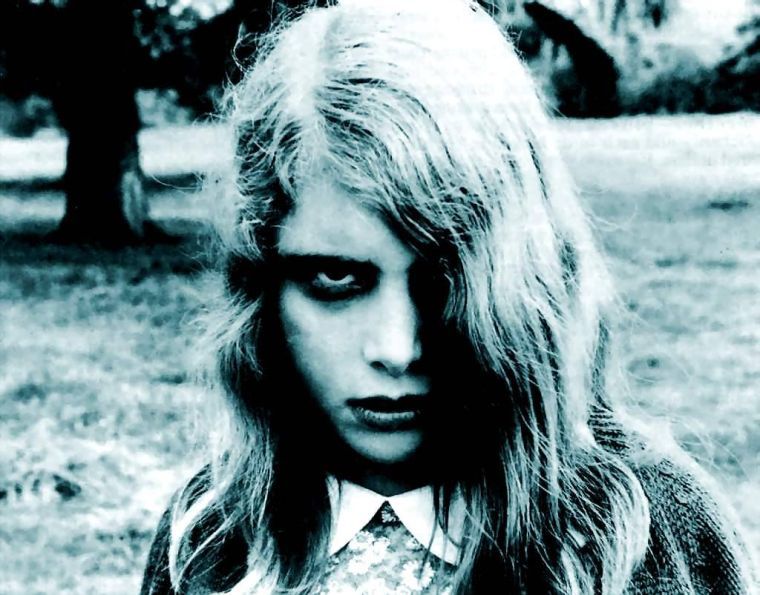A tale of two monsters: how societal anxiety influences horror
October 30, 2013
Apparently “The Walking Dead” is more popular than football.
According to the New York Times, the season-four premiere of the graphic-novel-turned-television-sensation garnered 16.1 million viewers, surpassing any NFL game aired this year.
The American public loves zombies — or at least connects with the fear that they provoke. Through films and television, the zombie has experienced a Renaissance that has many people wondering why the fear of a zombie apocalypse is so appealing nowadays.
American news is riddled with reports of economic recession and uncertainty. Unemployment is up, and Americans almost witnessed the government default on its debt.
Adam Lowenstein, associate professor of english and the director of film studies here at Pitt, does not see the popularity of zombies and the increase in economic anxiety as a coincidence.
Horror taps “into our fears and fantasies about where we are in our own society and culture and where we would want to be,” he said. He added that it also plays off “where we would be terrified to be” as a society.
Lowenstein sees zombies as “our most working-class monsters,” considering that “they’re not very glamorous, they’re dirty, they’re broken, they’re disgusting and they don’t have much going for them individually. But in a mass, they are a terrifying threat,” he said.
Lowenstein, the author of the book “Shocking Representation: Historical Trauma, National Cinema and the Modern Horror Film,” postulates that the horror genre has for a long time been a deceivingly important medium for expressing cultural and historical reactions.
“Horror films — rather than the more culturally approved-of films that directly address events like the Holocaust, Hiroshima, Vietnam — actually have more to tell us about what it’s like to grapple with these dramatic, historical events,” he said.
This brings us to another popular monster nowadays — the vampire. Daniel Bernardi, the professor and chair of the cinema department and director of the Documentary Film Institute at San Francisco State University, believes that the vampire, like the zombie, is a character that can represent a multitude of ideologies.
According to Bernardi, these ideologies have been manipulated over time. “The history of the vampire movie moves from anti-Semitism and homophobia to some progressive sort of gay politics to issues of race,” and eventually “to gender-bending and sexual expression,” Bernardi said. He added that vampire films act as a “wonderful, historical vehicle for filmmakers to place all kinds of contemporary ideas into, so that the films, although they are about vampires and things that aren’t true, resonate powerfully [and] emotionally with audiences.”
The appeal of vampires is unique, says Bernardi. “Anything with religion becomes really palpable, anything with sex becomes really palpable, and anything with alien invaders or supernatural invaders becomes palpable,” Bernardi said. “And the beauty about the vampire is that it is all three.”
Lowenstein sees the two monsters’ popularity as representing two sides of the spectrum. “The vampire is among our most aristocratic monsters — very glamorous, very sexy and often very wealthy,” while “zombies are low on the economic ladder,” he said.
Lowenstein discussed the story of Alfred Hitchcock hiring Stanford researchers to investigate why “Psycho” was such a popular film. Why then? What did people fear so much about the story? The research remained inconclusive.
There are a multitude of interpretations, and there may be no clear-cut connection between why the public is afraid of vampires and why they are afraid of zombies.
In an article on Cracked.com, S. Peter Davis discussed the correlation that exists between a Republican president and an influx of zombie movies, and a Democratic president with an upshot of vampire films. And although it is tempting to think that political climate and horror genres are indirectly linked, Professor Lowenstein thinks that there is more going on.
“Whatever our political views are, I think we come to our horror films with a varied set of needs and desires, and often the political work that gets done between a film and its audience is not at the level of intention on the part of the film or of the audience,” he said. “It is something hard to quantify,” and a “matter of chance and accident on a certain level,” he added.
Bernardi agrees. Movies involving aliens and vampires become “the perfect repository for all the angst that gets built up by the right,” he said. “But it’s not a literal thing,” he added.
According to Bernardi, the big question that all filmmakers have to ask themselves is: “What are people afraid of right now?” From there, films and television shows have to play on the fear and anxiety of their audiences, using allegory, metaphor and special effects to be convincing and poignant. All of this leads to a film or television show that is “always about, thematically, the time in which it was made,” Bernardi said.
Nowadays, however, many of these once-timely metaphors can fall flat thanks to dated special effects.
Enrico Patterson, who has worked at the Manor Theatre in Squirrel Hill for two years, said that the “Midnight Manor” showings of old horror movies tend to bring in crowds of younger patrons who often do not get the same effect from the films that their parents may have received.
“I think for the most part, they come for the camp element,” he said. “They want to find something to laugh at.”
Some films seem to age better than others, depending on the subject matter and the effectiveness of metaphors.
Regardless of the ambiguity, Lowenstein believes that the horror genre remains a viable medium for cultural expression. “My conviction is that the horror film does have important things to teach us about how we go about representing these events and how we go about understanding them,” he said.



